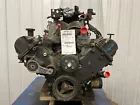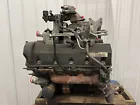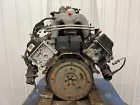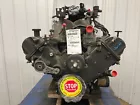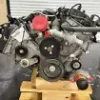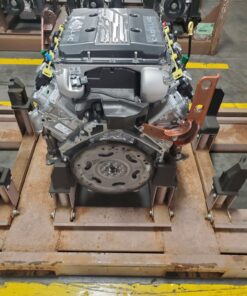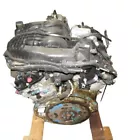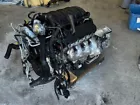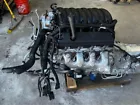FORD F150 4.6 MOTOR
3,200 $ Original price was: 3,200 $.3,000 $Current price is: 3,000 $.
FORD F150 4.6 MOTOR: A Comprehensive Guide
The FORD F150 4.6 MOTOR has been one of the best-selling trucks in America for decades, and a big reason for its popularity is its versatile and reliable engine options. One of the key engines that powered many F-150 models is the 4.6-liter V8 Modular engine. This engine combined decent power, good fuel economy for its time, and Ford’s reputation for durability, making it a favorite for many truck owners.
FORD F150 4.6 MOTOR: A Comprehensive Guide
The FORD F150 4.6 MOTOR has been one of the best-selling trucks in America for decades, and a big reason for its popularity is its versatile and reliable engine options. One of the key engines that powered many F-150 models is the 4.6-liter V8 Modular engine. This engine combined decent power, good fuel economy for its time, and Ford’s reputation for durability, making it a favorite for many truck owners.
History and Development of the FORD F150 4.6 MOTOR
The FORD F150 4.6 MOTOR is part of Ford’s Modular engine family, which was introduced in the early 1990s. The Modular series was Ford’s response to the need for a more modern, efficient, and scalable engine platform that could be adapted for many different vehicles.
-
First Introduced: The FORD F150 4.6 MOTOR debuted in 1991 in the Lincoln Town Car and soon after in the Ford Mustang and F-150.
-
Modular Design: The name “Modular” refers to the engine’s design philosophy, which allows for different displacements (from 4.6L to 5.4L and beyond) while sharing many components.
-
Replacement: The FORD F150 4.6 MOTOR replaced the older 5.0L V8, which had been a staple in the F-150 and Mustang for years.
Ford’s goal with the FORD F150 4.6 MOTOR was to create a more efficient and lighter engine without sacrificing power or torque. Over the years, it saw various updates in technology and tuning, allowing it to remain competitive.
Technical Specifications
Engine Configuration
-
Type: V8, 90-degree angle
-
Displacement: 4.6 liters (281 cubic inches)
-
Block Material: Cast iron (early versions), some later versions had aluminum heads
-
Cylinder Heads: Typically aluminum, but there were variations
-
Valvetrain: SOHC (Single Overhead Cam) 3 valves per cylinder or 2 valves per cylinder in older versions. Some performance variants had DOHC (Dual Overhead Cam).
-
Fuel Delivery: Sequential multi-port fuel injection
-
Compression Ratio: Generally around 9.2:1 to 9.5:1 depending on the version
-
Horsepower: Ranges from approximately 210 hp in early models to 300+ hp in performance-tuned versions
-
Torque: From 270 lb-ft up to 320 lb-ft
Dimensions and Weight
-
Length: About 26-28 inches (depending on accessories)
-
Weight: Approximately 430-480 lbs (varies by version and materials)
Variants and Applications
The 4.6L engine came in several versions over its lifespan. For the F-150, the most common are:
-
2-Valve SOHC: The earliest and most basic version, reliable but not as powerful.
-
3-Valve SOHC: Introduced around 2004, improved breathing and power output.
-
4-Valve DOHC: Used in performance vehicles like the Mustang GT and some specialty trucks but less common in F-150s.
Years in the F-150
-
The FORD F150 4.6 MOTOR was used extensively in the F-150 from 1997 until 2014 (though it started in other Ford vehicles earlier).
-
It was one of the base V8 engines before the introduction of newer EcoBoost turbocharged engines.
Performance and Driving Experience
The FORD F150 4.6 MOTOR was designed to provide a balance of power and efficiency for the F-150, especially appealing to users who wanted a V8 without the fuel consumption of larger engines.
Power Delivery
-
The engine offers smooth and linear power, with good low-end torque to help with towing and hauling.
-
The 3-valve versions improved horsepower and torque by better airflow management through the heads and intake system.
-
In everyday driving, the FORD F150 4.6 MOTOR is responsive and sufficient for light to moderate towing and payloads.
Fuel Economy
-
Fuel economy varies but typically ranges from about 15-18 mpg city and 19-23 mpg highway depending on model year, transmission, and truck configuration.
-
While not as efficient as modern turbocharged engines, it was respectable for a full-size V8 during its production years.
Common Issues and Reliability
Overall, the FORD F150 4.6 MOTOR is considered a reliable and durable engine, but like any engine, it has some common issues that owners should be aware of.
Common Problems
-
Spark Plug Issues: The spark plugs are located deep in the heads, which makes replacement more labor-intensive. Older versions tend to suffer from spark plug thread damage if plugs are not installed or removed carefully.
-
Timing Chain Tensioners: Early FORD F150 4.6 MOTOR sometimes experienced timing chain tensioner failures, causing noise and potential timing issues.
-
Oil Consumption: Some higher-mileage engines have been known to consume oil more rapidly due to valve stem seal wear.
-
Intake Manifold Leaks: Plastic intake manifolds on some models can crack over time, leading to vacuum leaks and rough running.
-
Valve Guide Wear: In some cases, valve guides can wear, causing increased oil consumption and exhaust smoke.
Maintenance Considerations
-
Regular oil changes are crucial, especially using high-quality synthetic oil.
-
Follow Ford’s recommended spark plug replacement intervals (often around 100,000 miles with iridium plugs).
-
Address any coolant leaks quickly to prevent overheating.
-
Use OEM or high-quality parts to maintain reliability.
Maintenance and Repair Tips
Routine Maintenance
-
Oil and Filter Changes: Every 5,000 to 7,500 miles, depending on oil type and usage.
-
Spark Plugs: Replace at recommended intervals with proper torque to avoid thread damage.
-
Air Filter: Change regularly to maintain airflow and engine efficiency.
-
Fuel Filter: Replace per manufacturer schedule to ensure good fuel flow.
-
Coolant Flush: Every 2-3 years or 30,000 miles to protect the cooling system.
Repair Tips
-
When replacing spark plugs, use a proper thread chaser if needed to clean the threads in the heads.
-
Inspect timing chain tensioners at higher mileage; early replacement can prevent engine damage.
-
Use OEM gaskets and seals, especially for intake manifold replacements.
Upgrades and Performance Modifications
For enthusiasts and those looking to boost performance, the FORD F150 4.6 MOTOR offers some upgrade potential.
Common Upgrades
-
Cold Air Intake: Improves airflow for slightly better throttle response and horsepower.
-
Exhaust Systems: Upgrading to a performance exhaust (headers, cat-back systems) can increase power and produce a more aggressive sound.
-
Tuning/ECU Remapping: Custom tuning can optimize fuel maps and ignition timing to increase horsepower and torque.
-
Camshaft Upgrades: Performance cams can significantly boost power but may affect drivability.
-
Forced Induction: Some owners have installed superchargers or turbochargers on the 4.6L for dramatic power gains.
-
Throttle Body and Intake Manifold: Larger throttle bodies and aftermarket intake manifolds can improve breathing.
Considerations
-
Upgrades should be balanced with proper supporting mods (e.g., cooling system upgrades, transmission tuning).
-
Ensure upgraded parts are compatible with your engine’s variant and year.
-
Keep emissions regulations in mind if you live in an area with strict inspections.
Comparing the FORD F150 4.6 MOTOR
The FORD F150 4.6 MOTOR has offered many engines over the years, so how does the 4.6L stack up?
-
Compared to the 5.4L V8: The 4.6L is smaller and lighter, with slightly less power and torque, but typically better fuel economy.
-
Compared to the 3.5L EcoBoost V6: The EcoBoost offers turbocharged power and better torque with better fuel efficiency, but the 4.6L has a simpler design and a classic V8 sound.
-
Compared to the 3.7L V6: The 4.6L offers more displacement and power, appealing to those who want traditional V8 performance.
-
Compared to the 5.0L Coyote V8: The 5.0L is more modern with DOHC and higher power potential, but the 4.6L is simpler and often cheaper to maintain.
Practical Uses and Suitability
The 4.6L engine is well-suited for:
-
Daily Driving: Reliable and smooth for commuting and errands.
-
Towing and Hauling: Capable of towing moderate loads (typically up to 7,000 lbs depending on truck configuration).
-
Light Off-Roading: Adequate torque and power for most light to moderate off-road activities.
-
Fleet Use: Due to its reliability and moderate maintenance costs, it’s popular in commercial and fleet vehicles.
Final Thoughts
The FORD F150 4.6 MOTOR has proven itself over decades as a solid and reliable powerplant. While it may not have the raw power of modern turbocharged engines, it offers a dependable balance of performance, fuel economy, and maintenance ease that many truck owners appreciate.
Whether you’re restoring an older F-150, maintaining a daily driver, or looking to boost performance, understanding the 4.6L’s characteristics, strengths, and weaknesses is key to getting the most out of this classic V8.
Related products
Engine
Engine
Engine
Engine
Engine


